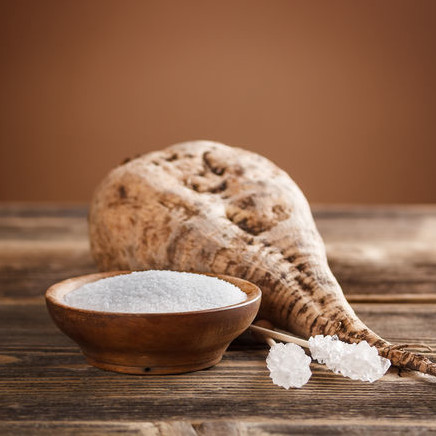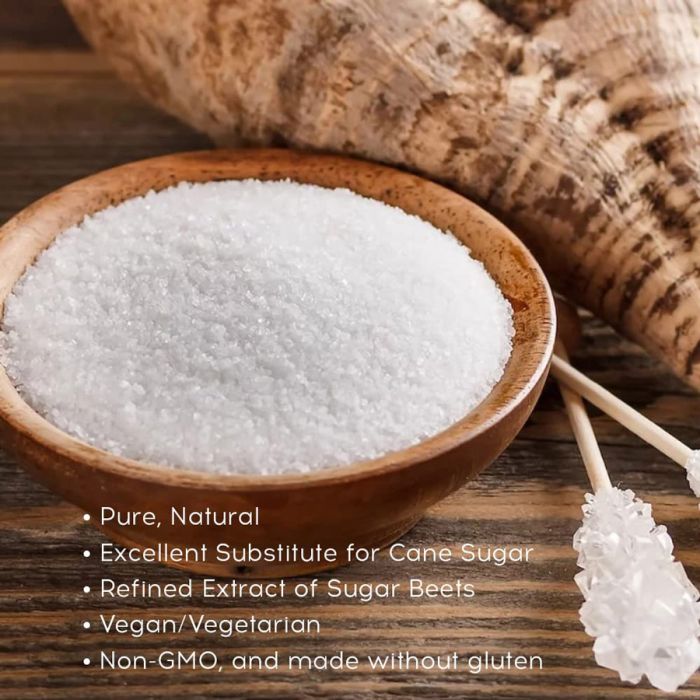The choice between beet sugar vs cane sugar can influence the sweetness level of certain recipes.
Discover the Uses and Benefits of Beet Sugar Vs Cane Sugar in Your Daily Diet
Checking out the unique high qualities of beet and cane sugar exposes more than just their sweetening capacities; it highlights their special effect on health and cooking arts. Beet sugar, known for its refined flavor, is often preferred in fragile desserts, whereas cane sugar, with its tip of molasses, adds splendor to robust recipes. Each type holds its own nutritional profile and glycemic effects, welcoming a deeper understanding of their functions in a well balanced diet plan and sustainable consumption practices.
Origin and Manufacturing Procedures of Beet and Cane Sugar

The distinct climates and dirt kinds needed for growing sugar beetroots and sugarcane add to distinctions in their cultivation techniques and geographical distribution, affecting the business economics and sustainability of their manufacturing. beet sugar vs cane sugar.
Nutritional Contrast Between Beet Sugar and Cane Sugar
Regardless of originating from different plants, beet sugar and cane sugar are nutritionally extremely comparable, both largely including sucrose. Each provides concerning 4 calories per gram, converting to roughly 16 calories per tsp. Structurally, both sugars are made up of about 99.95% sucrose, with very little amounts of various other substances like wetness and trace minerals, which do not significantly change their dietary accounts.

Ultimately, when selecting in between beet sugar and cane sugar based on dietary content alone, both offer similar benefits and drawbacks as they are essentially types of the exact same molecule-- sucrose, giving quick energy without various other nutrients.
Effect on Health: Glycemic Index and Caloric Content
Checking out additionally right into the impacts of beet sugar and cane sugar on wellness, it is necessary to consider their glycemic index and caloric content. Both sugars are classified as sucrose, which consists of glucose and fructose. This structure leads them to have a comparable effect on blood sugar level levels. The glycemic index (GI) of both beet and cane sugar is around 65, categorizing them as high-GI foods, which can trigger quick spikes in blood sugar levels. This is a vital element for people managing diabetes or those attempting to stabilize their power degrees throughout the day.
Each kind of sugar includes about 4 calories per gram, making their calorie material equivalent. For those keeping an eye on caloric consumption, specifically when handling weight or metabolic wellness conditions, recognizing this equivalence is essential (beet sugar vs cane sugar). Nevertheless, too much intake of any high-calorie, high-GI food can add to health and wellness issues such as excessive weight, cardiovascular disease, and insulin resistance.
Environmental and Economic Considerations of Sugar Production
Beyond wellness effects, the production of beet and cane sugar additionally raises substantial environmental and financial issues. Sugar beet cultivation often tends to call for cooler environments and has a lower geographical impact contrasted to my latest blog post sugar cane, which flourishes in exotic regions. Both crops are extensive in terms of water use and land occupation, potentially leading to deforestation and water scarcity. Economically, the worldwide sugar market is highly volatile, influenced by modifications in international trade policies and aids. Many countries incentivize sugar manufacturing via economic assistance, skewing market costs and affecting small farmers negatively.
Furthermore, making use of pesticides and plant foods in both beet and cane sugar growing can lead to soil deterioration and contamination, more affecting biodiversity and neighborhood water bodies (beet sugar vs cane sugar). The option between growing sugar beet or cane frequently pivots on neighborhood environmental conditions and financial factors, making the sustainability of sugar production a complex problem
Culinary Applications and Taste Differences
While the environmental and economic aspects of sugar production are certainly substantial, the selection between beet and cane sugar additionally affects culinary applications and taste accounts. Beet sugar, obtained from the sugar beet plant, is understood for its remarkably neutral preference.
Cane sugar, drawn out from sugarcane, frequently preserves molasses traces, which impart a distinctive richness and deepness. This minor molasses taste boosts the complexity of baked goods, sauces, and marinates. It is particularly preferred in things where a caramel undertone is wanted, such as in brownies visit their website or gingerbread. The mild variation in dampness material in between beet and cane sugar can influence the appearance and uniformity of dishes, making cane sugar a favored choice for specific recipes that profit from its special properties.

Final Thought
In verdict, both beet and cane sugar have distinctive origins and manufacturing processes, supplying comparable nutritional profiles with mild distinctions in salt content and flavor. While their effect on health and wellness, specifically relating to glycemic index and calories, is similar, the option in between them often steams down to environmental, economic aspects, and particular cooking demands. Understanding these elements can assist consumers in making educated choices that line Check This Out up with their wellness objectives and flavor choices.